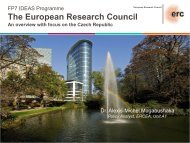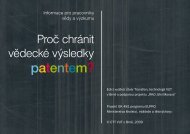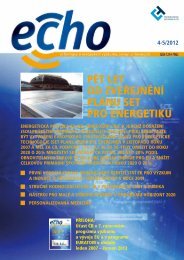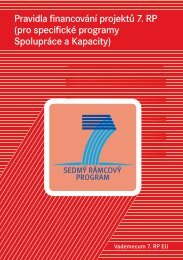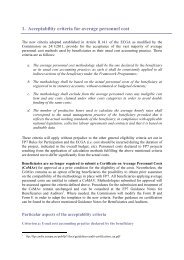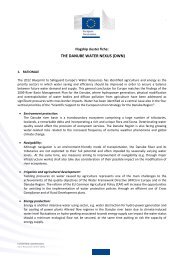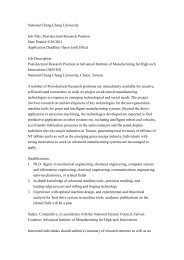Guide to Research and Innovation Strategies for Smart Specialisation
Guide to Research and Innovation Strategies for Smart Specialisation
Guide to Research and Innovation Strategies for Smart Specialisation
You also want an ePaper? Increase the reach of your titles
YUMPU automatically turns print PDFs into web optimized ePapers that Google loves.
2. Identification of the stakeholder groups <strong>and</strong> their motivation: different target groups have<br />
different needs <strong>and</strong> should be reached with different <strong>to</strong>ols. Traditional SMEs, high-tech<br />
companies, universities, transfer institutions, business intermediaries, local <strong>and</strong> regional<br />
authorities, national bodies, medias, etc. have different underst<strong>and</strong>ing <strong>and</strong> expectations<br />
from a RIS. The goal of the strategy should be <strong>to</strong> make sure that they all endorse <strong>and</strong><br />
contribute <strong>to</strong> the strategy from their perspective. To this end, appropriate communication<br />
methods <strong>and</strong> expected results need <strong>to</strong> be spelled out <strong>for</strong> each target group;<br />
3. Definition of traditional communication <strong>to</strong>ols: the <strong>to</strong>ols include the use of a logo which<br />
builds <strong>and</strong> rein<strong>for</strong>ces the regional identity <strong>and</strong> puts innovation at its core; attractive <strong>and</strong><br />
dynamic web pages, including parts in English <strong>for</strong> wider dissemination; newsletters <strong>and</strong><br />
leaflets <strong>to</strong> complete the in<strong>for</strong>mation with traditional communication <strong>to</strong>ols; specific<br />
publications on certain aspects of the RIS (like key analyses, peer review reports, etc.);<br />
conference <strong>and</strong> seminars, including participation in international conferences, which give<br />
the opportunity <strong>to</strong> diffuse synthetic material on the RIS; press <strong>and</strong> TV campaigns. The<br />
content of the communication should include strategic lines <strong>and</strong> priorities but also<br />
communication <strong>and</strong> demonstration on flagship projects;<br />
4. Definition of active communication <strong>to</strong>ols: active <strong>to</strong>ols mainly include pro-active activities<br />
such as targeted visits <strong>to</strong> stakeholders or concerted workshops <strong>and</strong> seminars. Examples of<br />
active <strong>to</strong>ols are: visiting the sites, marketing of the participants <strong>to</strong> the project; press<br />
conferences (various with different scenarios); round table discussions; meetings with local<br />
<strong>and</strong> regional politicians; etc. Conferences <strong>and</strong> seminars are frequently used: launch<br />
conferences ease the awareness <strong>and</strong> stimulate the participation of the ac<strong>to</strong>rs <strong>to</strong> the exercise,<br />
but it is not easy <strong>to</strong> decide on the content of the message <strong>to</strong> be passed on. Conferences in<br />
the middle of the process stimulate the participation of regional ac<strong>to</strong>rs <strong>to</strong> the construction<br />
of the strategy <strong>and</strong> the validation of analyses. An end conference is necessary since all<br />
stakeholders in the region are supposed <strong>to</strong> adhere <strong>to</strong> the strategy <strong>and</strong> implement it in its<br />
own area.<br />
51



